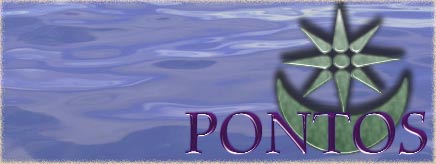auth - Most of the available literature comes from climate science which is seeking to improve models of climate change and understand the processes by which oscillations occur. Consequently various techniques for reconstructing past temperature records are a primary focus. Ice core data has been an important method and records the atmospheric data in general terms as well as precipitation for the locality. It is a good proxy for the long term record, ie. intervals of 1000 years but it is not sufficiently resolved for events on the scale of 100 years. It can pick up these events but cannot place them in context. To work on a scale of 100 years, one needs other methods such as stomatal index or isotopic data. These however reflect the local conditions and are not easily transcribed to global climate.
The use of global data is not necessarily of that much use to history however as man adapts to many different environments. Local temperature and precipitation records are much more useful as they can have a bearing on what crops could have been grown and how much could have been grown. This can then be compared with pollen records for verification. However, most of the funding is for CO2 and global temperatures so we lack the sort of data we would like.
Precipitation is as important to the settlement history of a region as is temperature. In addition, isostatic and eustatic changes and the dynamics of wetlands have also affected many parts of the germanic speaking world, none of which are of interest to climatologists.
I posted a graph of the precipitation of the Dosenmoor bog in Schleswig Holstein some years ago:
http://tinyurl.com/398lsuw
which may have a correlation with the amount of cultivatable land. Unfortunately, we don't have crop pollen records for the surrounds. The point is, it is the precipitation and nature and suitability of the land and not only the temperature that determines the settlement history.
Most of my reading has been around the Humber Wetlands in an attempt to understand the settlement history in this region. It is a nice example of how changes to the environment affect local settlement.
At the end of the last ice age, a large meltwater lake was left in the southern end of the Vale of York and Humberhead Levels as can be seen in this map by Van Noort:
http://tinyurl.com/32af7n7
This area is fed by several rivers, Trent, Ouse, Don, Wharfe, Derwent etc. Eventually the dam of clay moraines which held the lake broke and the lake drained to leave a marsh.
During the roman period, the marsh was dry and the land was cultivable but was always subject to innundation. We know from the archaeology that people lived on and worked the land but the roman engineers knew enough about the potential flooding to build their roads around the old lake bed:
http://tinyurl.com/2upxcn7
The western route from Lincoln to York is still known as the Ridge Road.
In the 4th century, the dynamics of wetland expansion and contraction caused the roman port at Brough on Humber to silt up and it was abandonned. The army could still use the westerly road but grain grown in Lincolnshire and the Yorkshire Wolds could no longer be easily exported, so the regions fell into decline. Lead production too, which was mined in the Pennines and exported via Brough ceased. So there is a major impact on the economy of the region.
Towards the end of the 4th cent. the isostatic and eustatic changes caused the entire area to be subjected marine innundation, known as the North Sea Transgression. In some places roman artefacts are found under 3 metres of marine deposits. The entire area shown in dark green was turned into wetlands looking something like this:
http://tinyurl.com/33vm5cn
The changes affected the settlement for the next 1000 years. As the romano british declined, germanic speakers started to settle on the Yorkshire and Lincolnshire Wolds but they don't move west for nearly two centuries. When they do move west it is onto the the Lincolnshire Edge. When the Scandinavians start to settle, it is in places like the Isle of Axeholm, seen as an island to the west of the Lincolnshire Edge. It is not until after the reign of Queen Elizabeth that the area starts to be drained.
There is settlement thoughout the late holocene climate periods, Roman Warm Period, the Early Medieval Cool and Medieval Warm Periods and the Little Ice Age. The interest is in the way different groups exploit the landscape which exists. No one factor is responsible for the changes in settlement, it is always a combination. The changes meant that a large scale cereal production could not be maintained. This was also affected by cooling of the temperature which meant some cereals could no longer be grown so far north and the romano british economy disappeared.
Van Noort asks the interesting question, why didn't the incoming anglo saxons build terps in these extensive wetlands? It is either because they adopted new methods of animal husbandry or that no terp builders were involved in the new settlement. Haio Zimmermann suggests that Britain's atlantic climate which, despite overall cooling, was still warmer than the continental winter climate and allowed cattle to be outwintered, saving on summer production of hay.
Global climate change models can only be of use in the most general sense and do not provide enough detail to explain how different groups might exploit whatever situation exists. Whilst one group may abandon an area because it no longer sustains their way of life, another group with a different economy may find it emminently suitable to their way of life.




 donated by ARCHIPPOS for being friendly to new people.
donated by ARCHIPPOS for being friendly to new people. donated by Tellos Athenaios as a welcome to Campus Martius
donated by Tellos Athenaios as a welcome to Campus Martius
 Reply With Quote
Reply With Quote




















Bookmarks